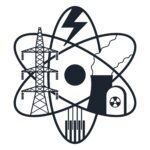It’s the weekend! Kick back and catch up with these must-read articles from around the web:
Across the country, a big backlash to new renewables is mounting (Ohio Capital Journal) In four terms as a county elected official in northern Ohio, it was the most contentious issue Doug Weisenauer had ever seen. The state legislature had newly empowered county governments to drastically restrict wind and solar power development, a process formerly overseen by the Ohio Power Siting Board, and the meetings of the three-member governing body for Crawford County (population 41,754) suddenly started becoming a lot more animated. “As soon as Senate Bill 52 passed, the anti-wind people, they started converging on our weekly commissioners’ meetings and demanding that we do something,” said Weisenauer, a Republican, like the other two members of Crawford County Commission.
Three ways to tell if a company is a genuine climate leader (Schroders) As the world faces up to the need to cut harmful emissions, companies are keen to show they’re playing their part. But should their climate claims always be accepted at face value? As specialists in climate change investing, we look to identify the companies who are genuine “climate leaders”. This means they have ambitious, credible plans to decarbonise their operations. Importantly, such plans must be consistent with limiting climate warming to 1.5 degrees above pre-industrial levels, as per the 2015 Paris Agreement. There are many companies who do have these credible plans. And then there are plenty of others who have targets in place, but are not genuine leaders.
EPA details plans for $27 billion in Inflation Reduction Act climate funds (The Hill) The Environmental Protection Agency (EPA) on Tuesday detailed how it plans to spend $27 billion in climate funding provided by the Inflation Reduction Act. The Biden administration explained that it will split the fund up into two programs. A total of $20 billion in grants will go to nonprofits that collaborate with local financial institutions including green banks, credit unions or housing finance agencies. That money will go toward projects that cut pollution and energy costs, according to the announcement.
Hurricane Ian destroyed parts of Florida, but one town came out of the storm almost unscathed. Inside Babcock Ranch, where one resident says they survived ‘by design.’ (Insider) For all five years that he’s lived in Babcock Ranch, Mark Wilkerson has been telling everyone he’ll never lose power in a storm. But when Hurricane Ian slammed into southwestern Florida in September, with its torrential rain and 150 mph winds, Wilkerson felt his conviction waver. Seated at his dining table all alone, he could feel the walls of his house shake under the sheer force of nature. “Today’s the day the power is going to go out,” he thought. And there was nothing he could do but wait.
Iceland’s Most Surprising Tourist Attraction? Power Plants. (Condé Nast Traveler) Rising up from an otherwise desolate stretch of landscape, sinuous plumes of steam signal my arrival at Hellisheiði Power Plant, Iceland’s largest, and very much functioning, geothermal power station. Touring a power plant might not immediately conjure up thoughts of vacation. But according to a 2016 Gallup poll, nearly half of Iceland’s foreign tourists—who quickly learn how much of their itinerary is powered by green energy—have expressed interest in doing just that.
NULL





